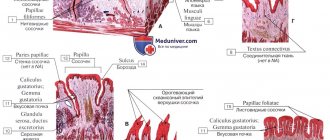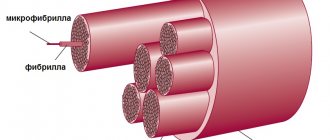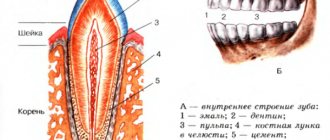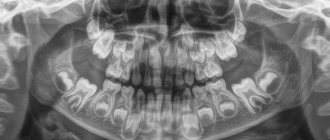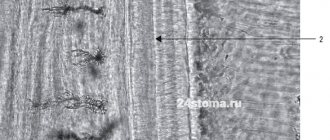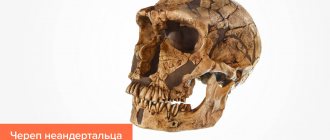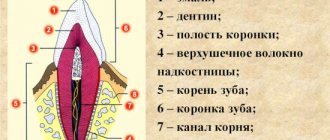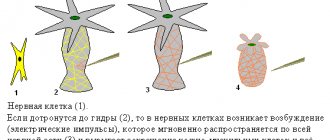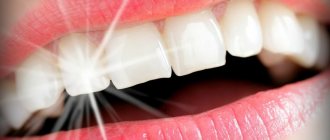A human tooth is a fairly small part compared to all the other bones in the skeleton. However, it can be considered the most complex structure of all the solid parts of the human body, because each tooth, unlike other bone tissues, protrudes outward and is in direct contact with the external environment, while also bearing the chewing load. And when patients come to the VivaDent clinic with certain problems, dentists and orthodontists try to preserve (or reconstruct) the teeth as much as possible as they should be in their natural healthy state.
If you compare a tooth to an iceberg, then it also has two parts: visible in the mouth and invisible, deepened in the gum tissue. The upper part is called the coronal part (or simply the crown - by the way, the same name is given to a dental prosthesis without a part inserted into the gum), and the lower part is called the root part.
Grabbing and biting
In the front part of the dentition there are incisors, four each on the upper and lower jaws.
They have a relatively sharp edge that, when pressure is applied, can cut even fairly dense food. Also in the oral cavity there are fangs - pointed teeth, inherited by humans from predatory ancestors. They are involved in holding food and tearing small pieces from it.
The loss of incisors and fangs leads to the fact that without its correction a person can only eat liquid or pre-cut foods into small pieces.
Tooth roots
The processes of bone tissue - the roots of the tooth, hold it in the jaw - and in this they are very similar to the roots of plants. But, in addition, in each root process there is a void inside - this is the root canal. The same nerve fibers and capillaries that go higher into the pulp, and from below are brought out into the jaw through a tiny hole at the tip of the tooth root, are laid in it, like wires in a protective cable. This hole is called apical.
Depending on the type and size of the tooth, there may be one root, or there may be two.
Grinding food
The human stomach is capable of fully digesting only finely ground food, which is abundantly moistened with saliva. For this purpose, there are premolars and molars in the mouth, which act like millstones - they grind large pieces of food, while simultaneously mixing it with the secretion of the salivary glands.
The absence or loss of one of these teeth leads to the fact that unprocessed large particles of food enter the gastrointestinal tract, which are difficult to respond to enzymes and can cause various chronic diseases of the stomach and intestines.
What is around the tooth?
The tooth does not just sit in the soft flesh of the gum, held only by its tissue. In a healthy state, the tooth interacts with both the nervous and circulatory systems of the body. In addition, the roots of the tooth fit into their corresponding “slots” in the jawbone. Therefore, the tissues surrounding the tooth are not just “pulp”, but its functional support and protection: the gums and periosteal tissues hold the tooth in its intended position, conduct blood to it through the vessels and connect the nerve endings of the dental unit with the entire nervous system.
The root of the tooth is held in the jaw by a bonding material - natural dental cement. The tissue surrounding the root is called periodontium. And the notch in the jawbone where the tooth is inserted is the alveolar foramen, or tooth socket.
Archaeologists have long known this fact: when human remains are discovered, it is the teeth that usually turn out to be the part of the skeleton that is preserved better than other bones. Even when, after thousands of years, skulls are destroyed, the teeth from them are often returned to scientists of our time unchanged - in the form in which they were during the life of a person or other creature.
All this suggests that with proper daily care and timely treatment using modern technologies, the teeth of each of us have every chance of being preserved into old age. And, unlike our ancestors who lived centuries and millennia ago, people of the current generation have every opportunity to come to the VivaDent clinic and use implantation and prosthetic technologies if any of the teeth could not be saved.
Indicative
Teeth are an indicator of the general condition of the body. The presence of any metabolic disorders, chronic diseases of the endocrine, digestive and other systems, vitamin deficiencies, unbalanced nutrition - all this negatively affects the condition of the dentition - the teeth change their shade and begin to crumble.
Therefore, caring for your smile includes not only regular hygiene procedures and visits to the dentist’s office, but also treatment of concomitant pathologies.
As you can see from the article, teeth are not only about comfortable eating. The loss of at least one element of the dentition is fraught with possible problems with digestion, speech, as well as the development of complexes against the background of a cosmetic defect.
What does the crown of a tooth consist of?
The part of the tooth that rises above the gum is not a monolithic piece made of homogeneous bone material. It is something like a nut in a shell. On top of the tooth is covered with a harder layer designed to protect against various influences - this is tooth enamel. And underneath it lies a softer and more vulnerable layer - it is called “dentin”. And even deeper, under the dentin, going into the root part, lies the “core” of the tooth - a cavity called the pulp.
Let's consider each component separately.
Enamel
Tooth enamel is de facto one of the hardest tissues inside the human body. Even large bones, designed to bear a load of tens of kilograms, are actually looser in structure than tooth enamel - after all, they do not need to constantly encounter various bacteria, constantly grind anything foreign (that is, food), and even collide with antagonist teeth.
Healthy enamel has a light (although not completely snow-white) color and a glossy surface texture; it is very smooth and dense.
Dentine
Dentin is also a type of bone tissue: that is, in an adult, dentin, like enamel, does not grow or change (unless we talk about cases of carious lesions). It is looser and more fragile compared to enamel - but it is still a “non-living” material that does not have nerves or capillaries. Dentin is something like a backup protective layer between the enamel and pulp.
Pulp
Under the dentin layer in the tooth there is a cavity, securely closed on all sides by hard “walls”. But this is not an “air bubble”, but a kind of chamber where the finest blood vessels and nerve fibers are concentrated. The pulp is very necessary during the period when the tooth is growing - all nutrients are transferred to it through this living core.
However, when a person becomes an adult and his teeth are finally formed, the role of the pulp ceases to be so important - it ceases to nourish anything. However, it may still be useful: after all, if the patient feels toothache, it means that it is the nerve fibers in the pulp that make it known about some kind of inflammation. However, when treating pulpitis, dentists often remove the pulp with all its contents - the adult patient’s tooth does not suffer from this, either functionally or aesthetically, and in the future such a pulpless tooth will definitely not cause pain.
Functional properties of elements
Teeth perform several functions at once. Each element has a distinctive shape according to its purpose. The main role of the units is digestive. The quality of assimilation of useful elements by the body depends on the thoroughness of grinding the products. Only after chewing and moistening with saliva will the food be ready for subsequent processing by the digestive organs.
Chewing one piece lasts on average 10-20 minutes. The force exerted by the teeth on food sometimes reaches 80 kg. Incomplete dentition can lead to disturbances in the digestive system.
Another function of the elements is aesthetic. With malocclusion, a person may develop psychological problems, since the first thing others pay attention to during a conversation is a smile. Teeth also play a role in the formation of syllables. In the absence of one or more elements, the pronunciation of syllables changes: a lisp appears, speech is distorted.
Symptoms
Cutting a child's teeth is quite painful. The first signs of this phenomenon:
Do baby teeth hurt?
- increase in body temperature (hyperthermia can persist until all 4 fangs are “born”);
- nasal congestion;
- restless, capricious, whiny behavior, loss of appetite;
- insomnia;
- redness, swelling, soreness (symptoms of an inflammatory process) of the gums where the upper or lower gums are cut;
- diarrhea (increased gas formation in the intestines);
- immune failure;
- conjunctivitis (inflammation of the eyelids), excessive lacrimation.
It is important to understand that severe, constant pain in the mouth can indicate a wide range of dental problems (for example, indicate gumboil, periodontitis, etc.). That is why, in case of severe eruption of permanent fangs, it is recommended not to self-medicate, but to seek help from a doctor.
Malocclusions
With a correct bite, the teeth of the upper jaw protrude onto the elements of the lower jaw by no more than 1/3. This position will make it easier for the jaws to chop food. Malocclusions are usually associated with the following conditions:
- The upper units overlap the lower ones by more than ½. This type of bite is usually called a deep bite.
- Certain groups of teeth may not fit together at all. In this case, they talk about an open bite.
- Distal bite. What it is? The problem is said to occur when the upper jaw is overdeveloped.
- If the lower jaw is pushed forward, then there is a mesial deviation.
- When the structures are displaced relative to each other, a cross anomaly occurs.
If not treated promptly, malocclusions can cause toothless jaws. For this reason, it is important to contact an orthodontist at the first sign of a problem.
Classification of dental surfaces
To conveniently describe the localization of the pathological process, dentists use a term such as “crown surface”. There are 4 types of such surfaces:
Where is the eye tooth + photo
- Chewable. This part of the tooth faces the elements on the opposite jaw. In canines and incisors, this area is represented by the cutting edge.
- Vestibular. Located in the vestibule of the oral cavity. The vestibular surface of the anterior teeth has an area of contact with the lips. In the molars, this part is in contact with the inner shell of the cheek and is called the buccal surface.
- Lingual or lingual - the area of elements facing the tongue. It is in this area that the largest amount of plaque accumulates due to the difficulty of carrying out hygiene measures. The lingual side of the elements is not visible to others during a conversation, so many patients seek to install corrective systems on the inside of the tooth.
- Approximal. This type of surface is divided into medial and distal. In the first case, the area is located closer to the middle of the dentition, in the second case, closer to the edge of the arch.
Tooth surfaces
How to choose a teether
In pharmacies you can find miniature ergonomically shaped structures made of silicone, latex, rubber and plastic. It is noteworthy that there are universal models, as well as those that are intended exclusively for civil protection.
Requirements for such products:
- safety (it is better to purchase teethers from well-known brands);
- It is better to refuse products that are too small or, conversely, too large - they are extremely inconvenient to use.
Pharmacy teethers made of latex, plastic, rubber make it possible to facilitate the process of “giving birth” to a child’s fangs.
Features of milk elements
Milk units act as precursors of permanent elements. They usually appear in the first year of a baby's life. Usually the period of eruption of the first incisors is accompanied by painful symptoms for the baby. About 2-3 years may pass between the appearance of the first and the eruption of the last milk tooth. A 3-4 year old child has 20 fully formed baby teeth in his mouth.
The structure of teeth in children
The change of the primary occlusion to a permanent one is carried out from 6-7 years of age. The shape of the permanent elements will differ little from their predecessors. The only difference is the more massive crown part and dense enamel.
In children, the degree of mineralization of enamel and dentin is weaker than in adults. Therefore, their dental care should be carried out with special care. The milk tooth is designed in such a way that most of its volume is occupied by the pulp, so caries in children becomes more complicated faster.
Another difference between milk units and permanent ones is short roots. For this reason, tooth loss in children sometimes occurs unnoticed and painlessly.


